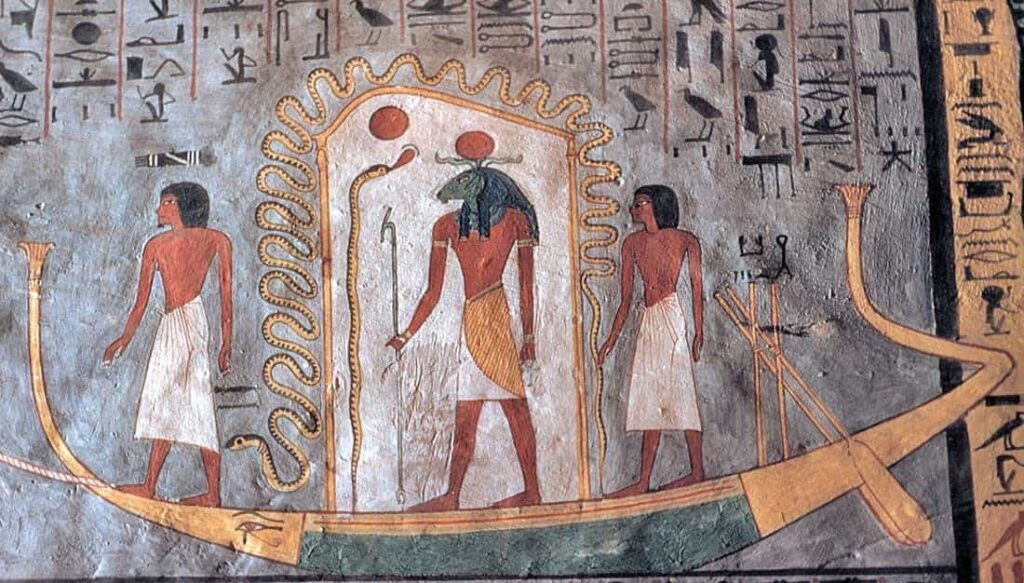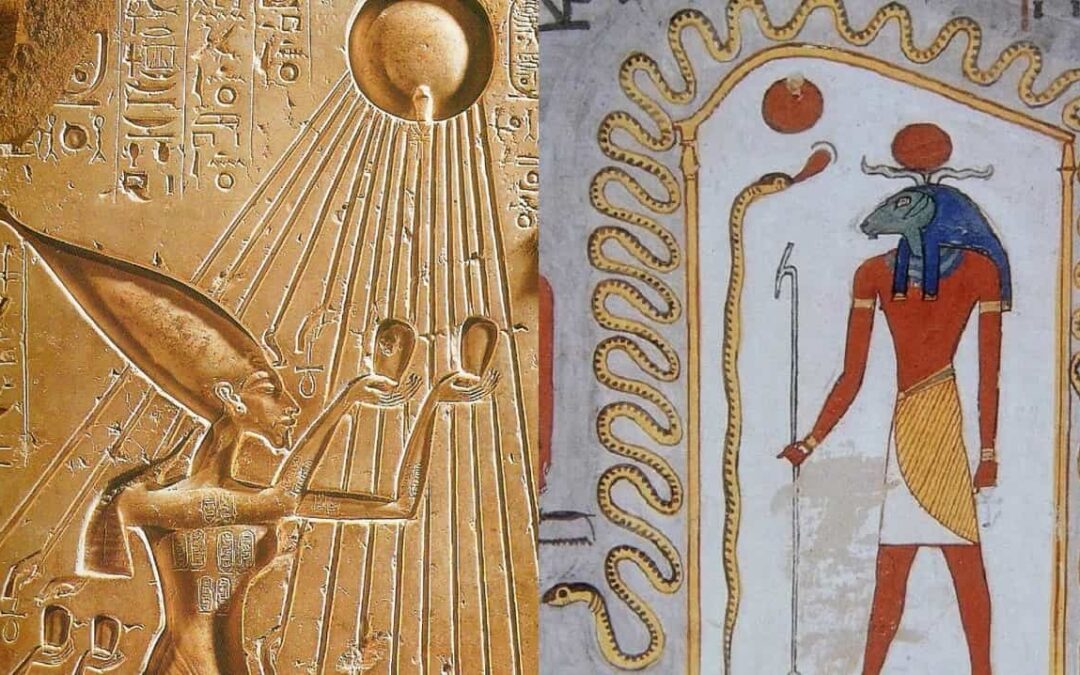The worship of the Sun in ancient Egypt held as much significance as it did in other ancient civilizations. In this article, we will explore the mythology and evolutionary aspects of ancient Egyptian religion, aiming to understand the various dimensions of solar reverence within the Nile civilization.
In ancient Egypt, a culture of veneration and deification surrounded the Sun. Funerary monuments such as the pyramids serve as tangible evidence of the deep-seated connection between Earth and Sun, Egypt and Sun, Pharaoh and Sun.
It is undeniable that “Egypt is a gift from the Nile,” yet the Sun, with its radiant beams, played a pivotal role in fostering the fertility and prosperity of this remarkable civilization. Revered not only as the paramount deity in Egyptian culture but also as the life-giving force for all lands, the Sun was often depicted as a circle, symbolizing eternity.
The myths detailing the Sun’s journey amalgamate theology and reality within Egyptian culture. These narratives elucidate the Sun’s passage across the Egyptian sky.
Ra, the Sun god, sails in a boat by day, imparting warmth and vitality to the Nile region. However, as dusk descends, Ra transitions to the “boat of the evening,” navigating the perils of the Underworld throughout the twelve hours of night, only to be reborn at dawn once more.
Symbolism of Dawn and Dusk
Among the various moments of the sun’s journey, dawn and dusk emerge as the most significant. Dawn marks the Sun’s rebirth, closely associated with Khepri, the beetle, whose action of rolling a ball of dung mirrors the movement of the solar disk.
At dawn, the Sun’s ascent symbolizes renewal, signifying its triumph over the beasts and darkness of the Underworld during the night, thereby bestowing blessings upon Egypt.
Conversely, dusk heralds the Sun’s descent and is linked with Atum, the primordial deity in the cosmogony of Heliopolis. According to this belief, Atum created himself and subsequently gave birth to the world, depicted in human form.
At its zenith, the Sun embodies its maximum splendor and strength, represented by the solar disk atop the god Ra, epitomizing the pinnacle of solar power.
The Evolution of Sun Worship in Ancient Egypt
The roots of sun worship in ancient Egypt trace back to the Old Kingdom, as evidenced by the Pyramid Texts, initially associated with the elite. However, it is likely that a cult venerating the Sun existed since predynastic times.
Initially personified as Horus, the Sun later became known as Ra, a name predominant from the Second Dynasty onward. This association extended to the monarchs who proclaimed themselves “sons of Ra,” elevating them to the status of solar deities. Notable examples include Djedefre of Dynasty IV and Sahure of Dynasty V.
In the Middle Kingdom, nearly all deities became intertwined with Ra. Evidence of this can be found in the presence of a small chapel within sanctuaries, where on the morning of New Year’s Day, the god or goddess of the sanctuary would be brought to the solar chapel. Here, a fusion of their ka (the vital force) with the solar ka would occur, renewing energy for another year.
Moreover, a widespread cult emerged across Egypt, venerating the amalgamation of Amun with Ra, known as Amun-Ra. While local cults persisted, they significantly diminished in prominence.
During the Middle Kingdom, the belief that only the king could merge with Ra evolved, expanding to include all individuals who could be interred with a minimal trousseau to journey into the afterlife, uniting with the Solar God upon death.
The New Kingdom witnessed the notable attempt by Akhenaten to establish a henotheistic religion centered on Aten, the demiurge god. However, the Amarna period’s revolution failed to materialize, with the clergy of Amun successfully resisting. Upon the pharaoh’s demise, this religious concept faded into obscurity.
Subsequent rulers reinstated the cult of Amun as a state religion while still respecting minor and local cults. The immense power of the Amun cult elevated its priests to significant economic and political influence. By the end of the Ramesside period, ancient Egypt operated under a dual policy, guided by both the pharaoh and the clergy.
The onset of the Third Intermediate Period marked the decline of ancient Egyptian religion, culminating in the waning influence of the Sun god’s cult. This decline reached its conclusion in the 4th century when Emperor Theodosius decreed the closure of all pagan temples in favor of Christianity.
In conclusion, Egypt’s worldview was profoundly shaped by the solar cult. The Sun held a pivotal role in cosmogony, mythology, and daily life, leading the Egyptians to identify themselves as “the flock of Ra,” underscoring the nation’s deep-rooted connection to the Sun.
Source: María González Rodríguez, historiaeweb.








